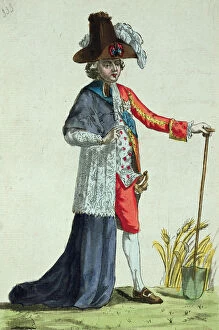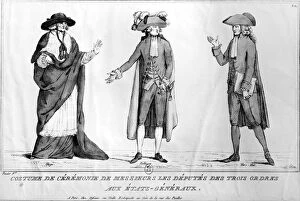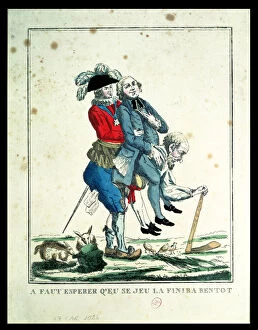Three Orders Collection (page 2)
"The Three Orders: Uniting France in the French Revolution" In 1789, amidst the turmoil of the French Revolution, a cry for change echoed throughout the nation
All Professionally Made to Order for Quick Shipping
"The Three Orders: Uniting France in the French Revolution" In 1789, amidst the turmoil of the French Revolution, a cry for change echoed throughout the nation. Peasants burdened by heavy taxes yearned for relief, hoping that this game of revolution would soon bring an end to their suffering. One significant development during this time was "The Union of Three Orders" or the Triple Union. It represented the deputies from three distinct social classes - The Clergy, The Nobility, and The Third Estate (commoners). This symbolized a crucial step towards representation and equality in society. As depicted in various artworks and cartoons from that era, these representatives gathered together with hope and determination. A painting preserved in Aix-en-Provence's town hall showcases them departing for Versailles in March 1789. Their mission was clear - to address grievances and fight for justice. However, doubts lingered as people wondered if this unity could last. Would it truly bring about lasting change? Only time would tell. The awakening of The Third Estate played a pivotal role during the revolution. They were no longer willing to be silenced or ignored; they demanded their rights be recognized alongside those of clergy and noblesse. A popular pastime during this period was playing "the game of goose, " which illustrated major stages of the revolution at its end in the late 18th century. It served as both entertainment and education on important historical events unfolding before their eyes. Artifacts such as plates decorated with genies sitting on drums showcased symbols representing each order – clergyman, nobleman, and commoner – highlighting their significance within society. Cartoons often portrayed peasants dressed as nuns (clergy) emphasizing their connection to religious institutions while expressing discontent with existing power structures. Amidst all these depictions emerged a sense among commoners that change was imminent - "I knew I'd have our turn.



